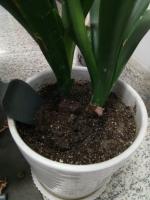What Tissue in a Plant Transports Water
Plants play a vital role in the ecological balance of our planet by producing oxygen through photosynthesis. The process of photosynthesis requires the absorption of water by the roots of the plant, which is transported to the leaves through a complex network of tissues. Understanding how water is transported within a plant is essential to our understanding of plant physiology and ecology.
Xylem Tissue
The primary tissue responsible for the transportation of water within a plant is xylem tissue. Composed of specialized cells called tracheids and vessel elements, xylem tissue is responsible for moving water from the roots of a plant to the shoots. The tracheids and vessel elements are hollow cells that are connected through small openings called pits. These cells also contain lignin, which strengthens the cell walls and ensures that they do not collapse under the pressure of water.
Xylem tissue works by creating a pressure gradient that draws water up through the plant. At the root level, water is absorbed through the root hairs by osmosis. It then moves through the root cortex and enters the xylem tissue. The tracheids and vessel elements of the xylem create a continuous pathway for water to move upwards through the plant, from the roots to the leaves. This creates a negative pressure within the xylem, which draws water up through the plant.
The Role of Transpiration
Transpiration is a process that occurs when water is lost through the stomata of leaves. The stomata are tiny openings on the surface of leaves that allow gases to enter and exit the plant. When water is lost through the stomata, it creates a negative pressure within the xylem tissue, which draws more water up from the roots. This continuous cycle of water movement is known as the transpiration stream.
The rate of transpiration is regulated by a number of factors, including temperature, humidity, and wind. Hot, dry conditions increase the rate of transpiration, while cool, humid conditions slow it down. Plants have evolved a number of strategies to conserve water during times of low availability, such as reducing the number of stomata or developing leaves with a waxy coating to reduce water loss.
Conclusion
The transport of water in plants is a complex process that relies on the specialized tissues within the plant. Xylem tissue, with its tracheids and vessel elements, is responsible for transporting water from the roots to the leaves. The process of transpiration creates a negative pressure within the xylem, which draws more water up from the roots. Understanding this process is essential to our understanding of plant ecology and physiology, and has implications for agriculture and the management of water resources.

 how many times do yo...
how many times do yo... how many planted tre...
how many planted tre... how many pine trees ...
how many pine trees ... how many pecan trees...
how many pecan trees... how many plants comp...
how many plants comp... how many plants can ...
how many plants can ... how many plants and ...
how many plants and ... how many pepper plan...
how many pepper plan...
































